Want to keep your work email and Word documents separate from the games you play after hours? In Windows, you can turn to virtual desktops, which seal off groups of apps, making them easier to manage.
Introduced in Windows 10 with the built-in Task View button on the taskbar, the feature has been revamped for Windows 11. Gone is the Windows timeline that showed your recent activity; in its place is the much sleeker and simpler Desktops icon.
View Your Virtual Desktops
You can manage your desktops by clicking the Desktops icon on the taskbar—it looks like two gray squares—which will display all your open programs and any virtual desktops you have created. (Or use the Win + Tab shortcut.)

Windows 11 also has a rollover feature that lets you hover over the Desktops icon to view existing desktops, reorder them, and create new ones.
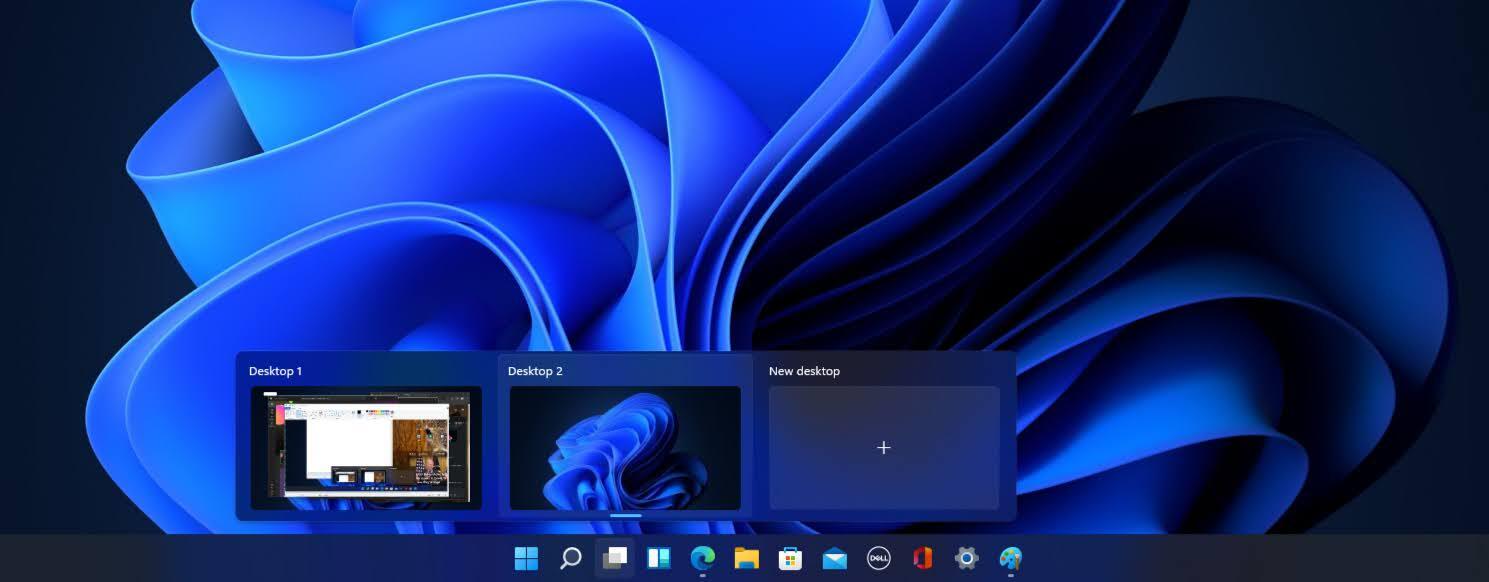
Create New Desktops
To create a new desktop, click the New desktop button and a new desktop will be added to the list. (Or use the keyboard shortcut Win + Ctrl + D.) The new desktop will be empty, but any open programs you were using are still open on the previous desktop.
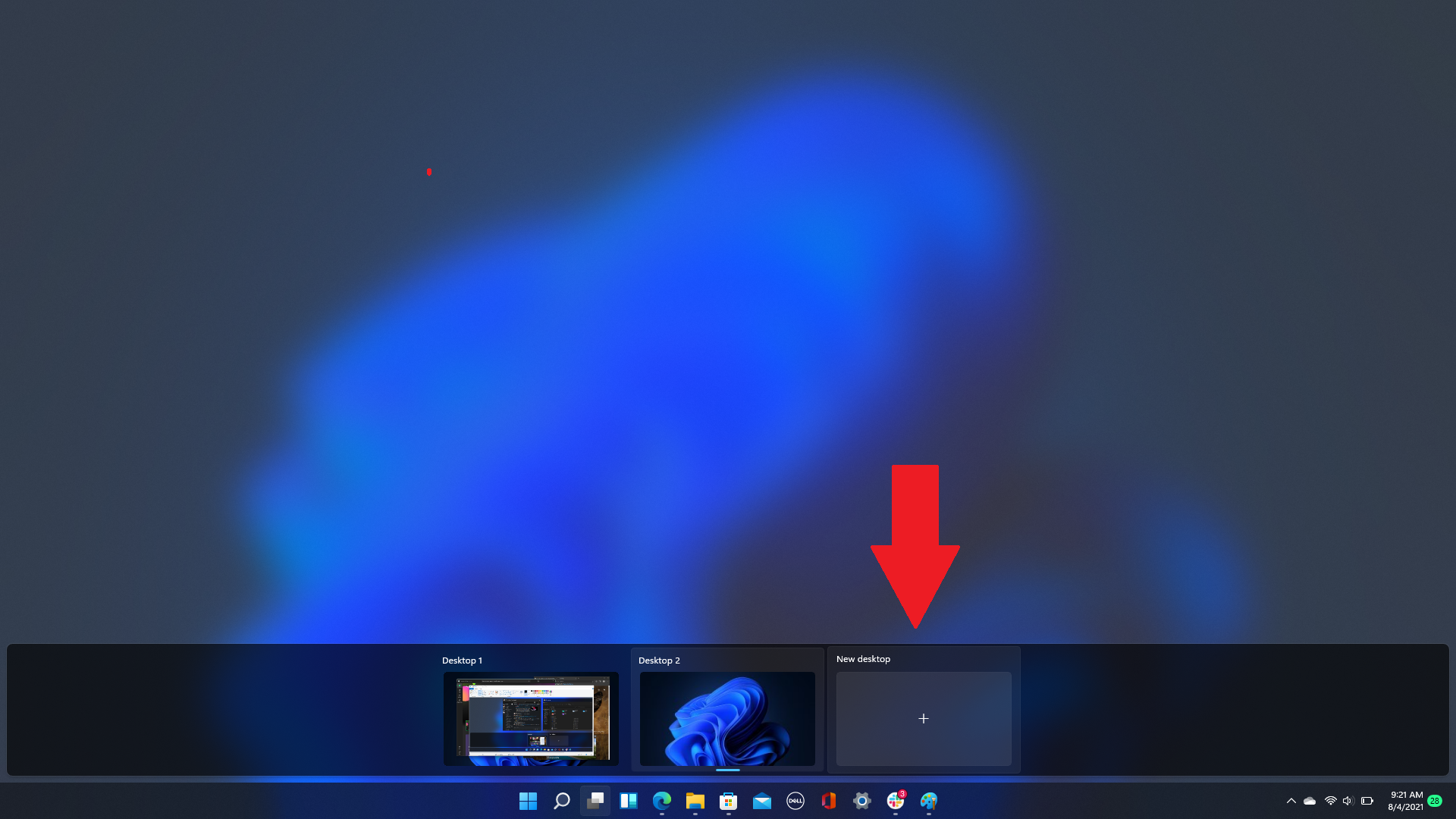
Rename Your Desktops
To rename open desktops, click the default name (Desktop 1, Desktop 2, etc.) in the small preview image and enter a new name. Label them by purpose or specific project, for example.
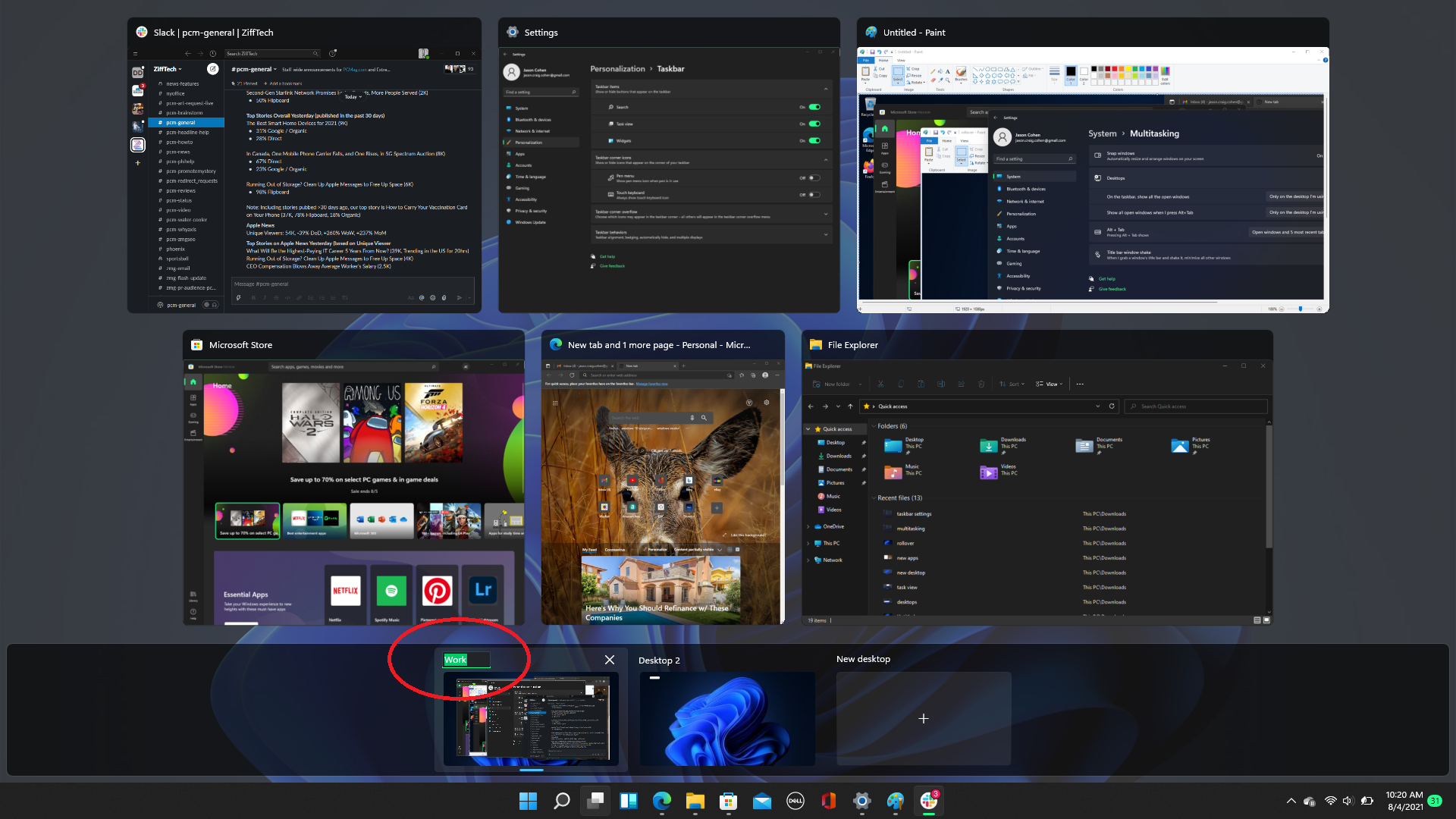
Re-Order Your Desktops
With multiple desktops, it may become hard to tell them apart. Organize open desktops by dragging them into your preferred order from the list on the bottom of the screen or right-click a desktop and and select Move right to change the order. (Use the Win + Ctrl + Left/Right Arrow shortcut to cycle between desktops and Alt + Shift Left/Right Arrow to move them.)
Change the Backgrounds on Your Desktops
For a more visual way to differentiate between virtual desktops, Windows 11 lets you add a custom background to each one. Right-click on a desktop, and select Choose background to open the Backgrounds menu for that desktop.
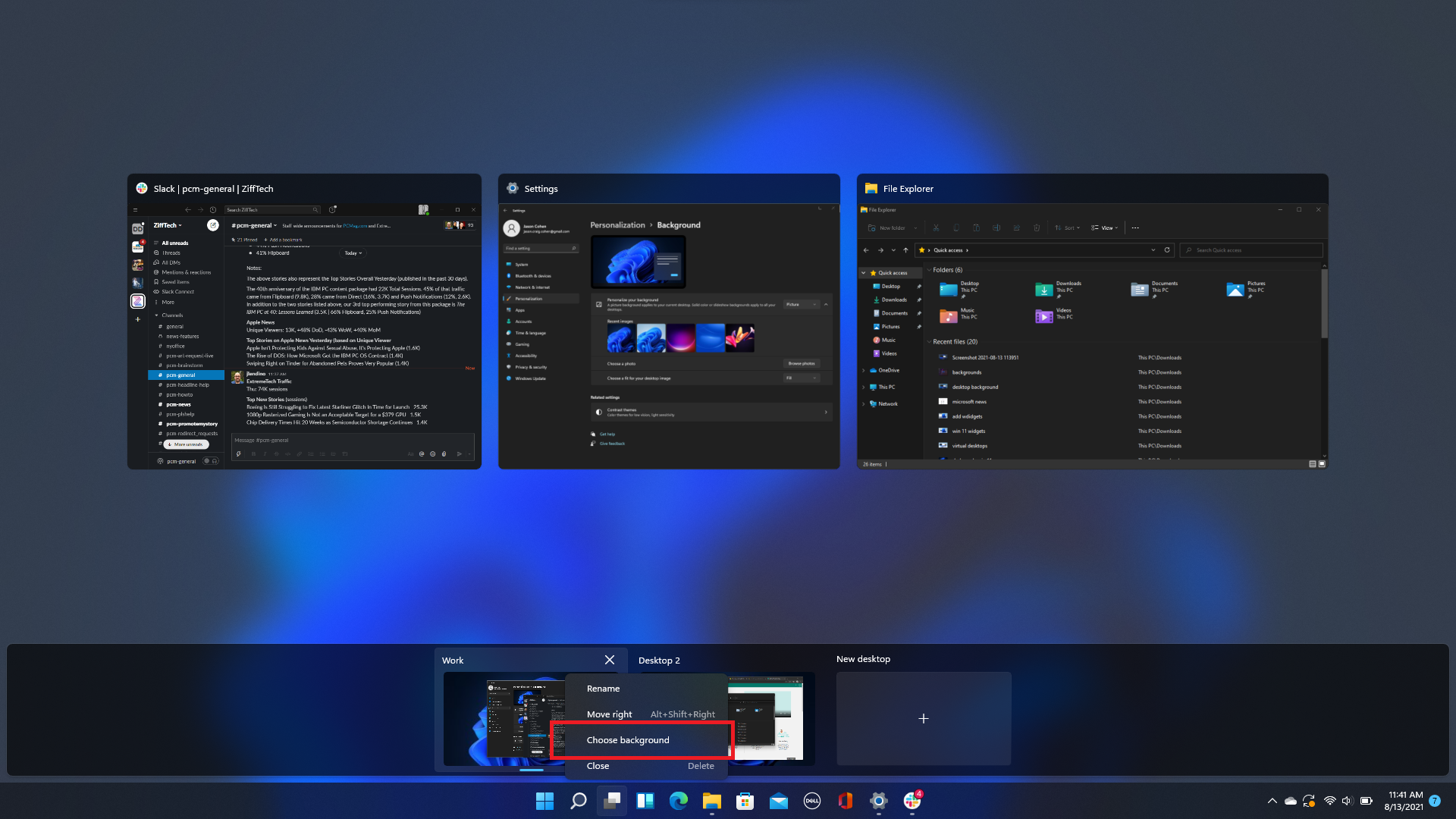
Choose a background or upload your own, and the background for that desktop will change, while other open desktops retain their original backgrounds.
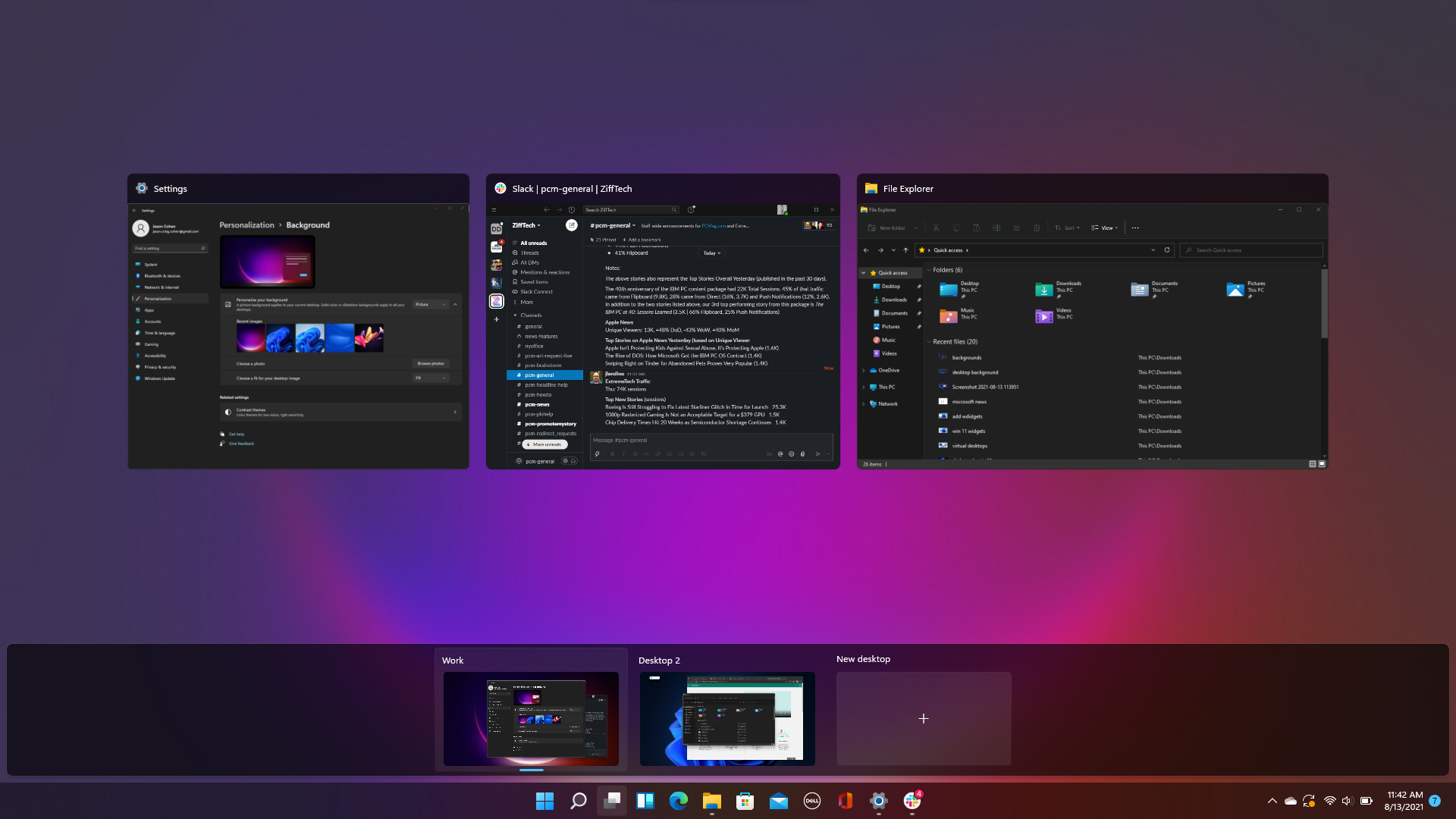
Have Windows Appear Across Desktops
By default, programs are kept separate from those in other desktops. So you could have multiple tabs open in Edge on one desktop—say, for work—and then jump to a new desktop and open a completely different set of Edge tabs for personal use.
If you want a specific window (or series of windows) to be available across multiple desktops, open the Desktops view, right-click the app, and select Show this window on all desktops. Selecting Show windows from this app on all desktops will do the same for every open version of the app.
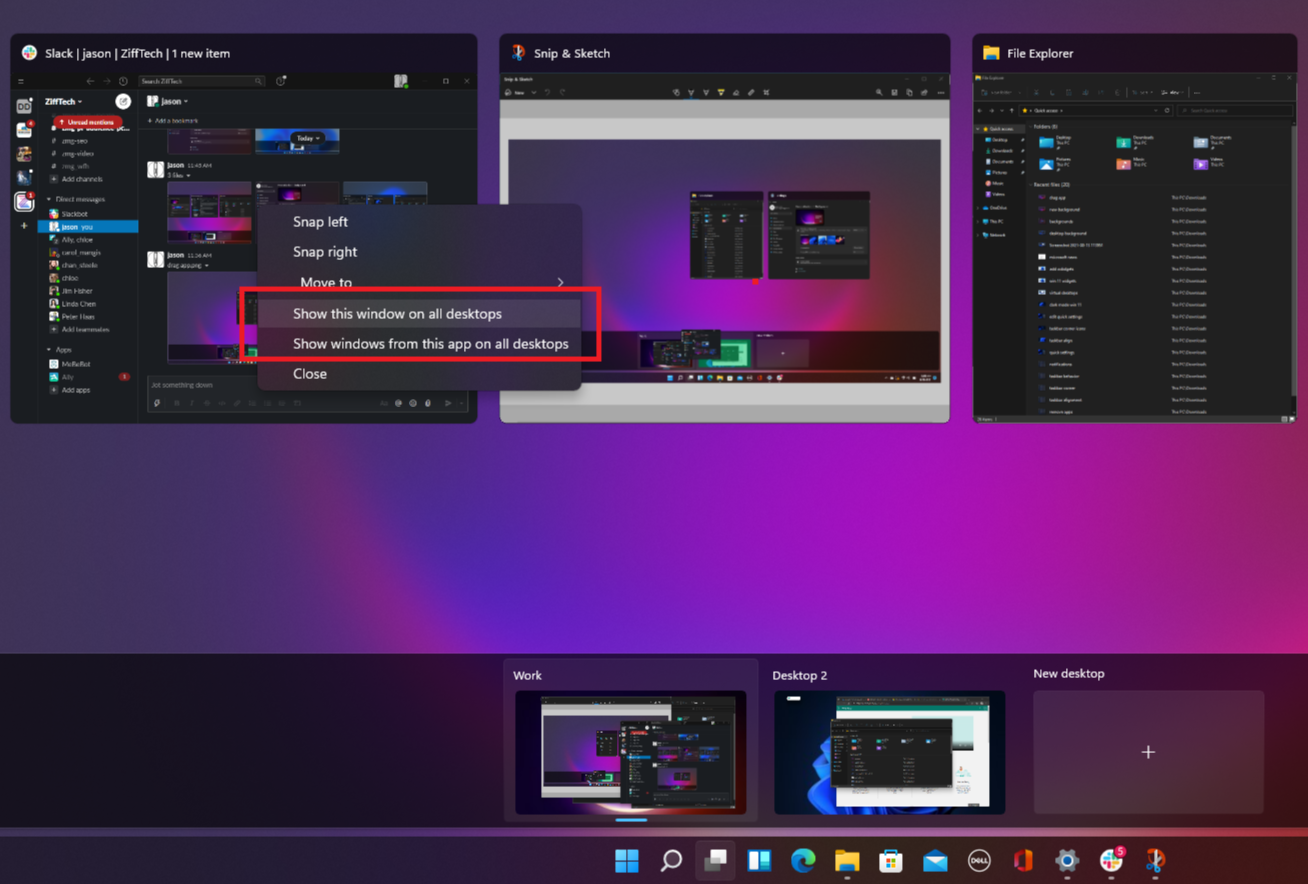
Drag Apps Into Another Desktop
Open apps within a desktop can be dragged into another open desktop for easy reorganization. If you close a desktop with open programs, they will be automatically moved to the next available desktop.
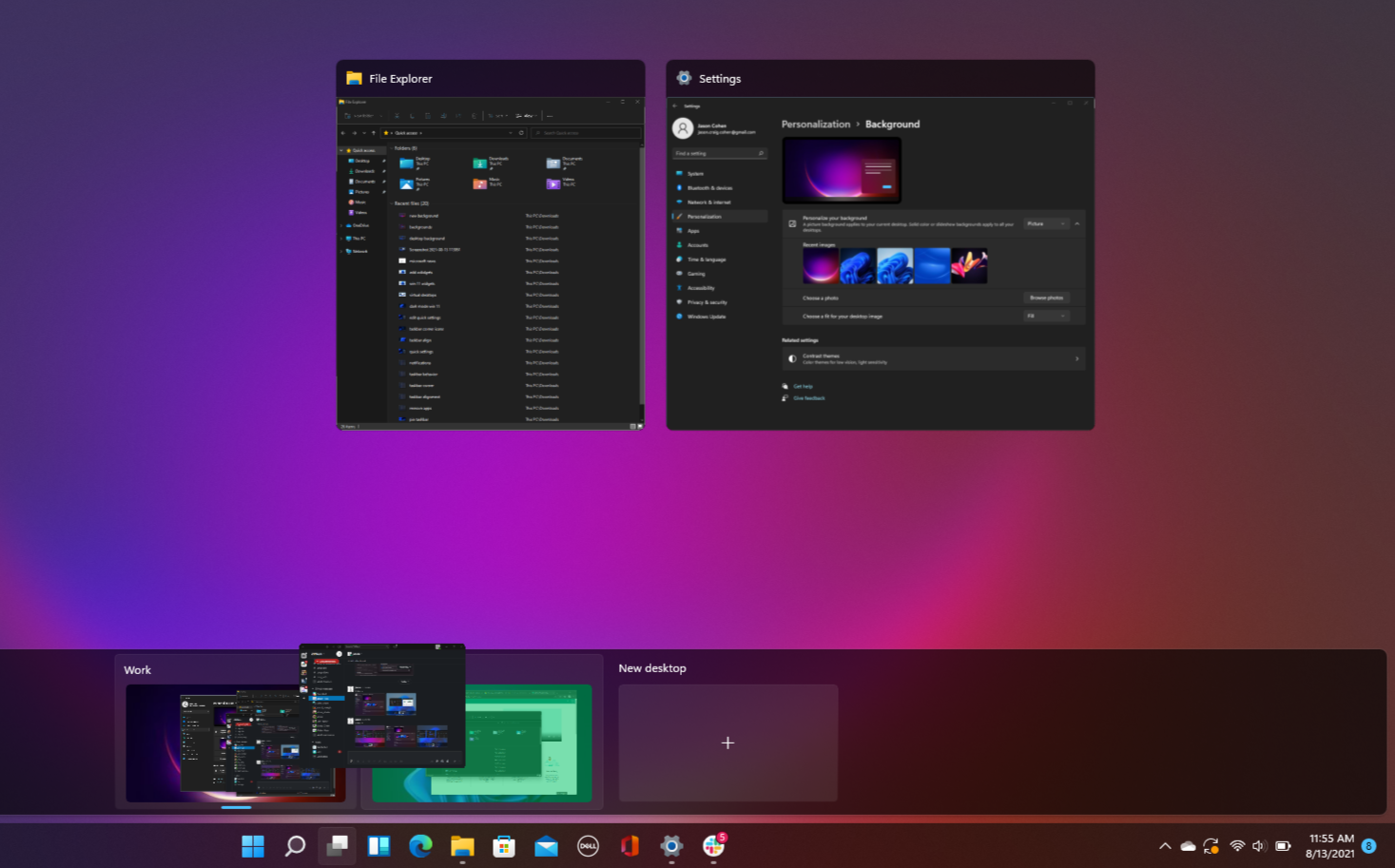
Customize Quick-View Taskbar Settings
If you want open apps in the taskbar to surface windows from across your desktops when you click them, go to Settings > System > Multitasking > Desktops > On the taskbar, show all the open windows > On all desktops. Here, you can also set the Alt+Tab keyboard shortcut to surface all windows from all desktops, too.
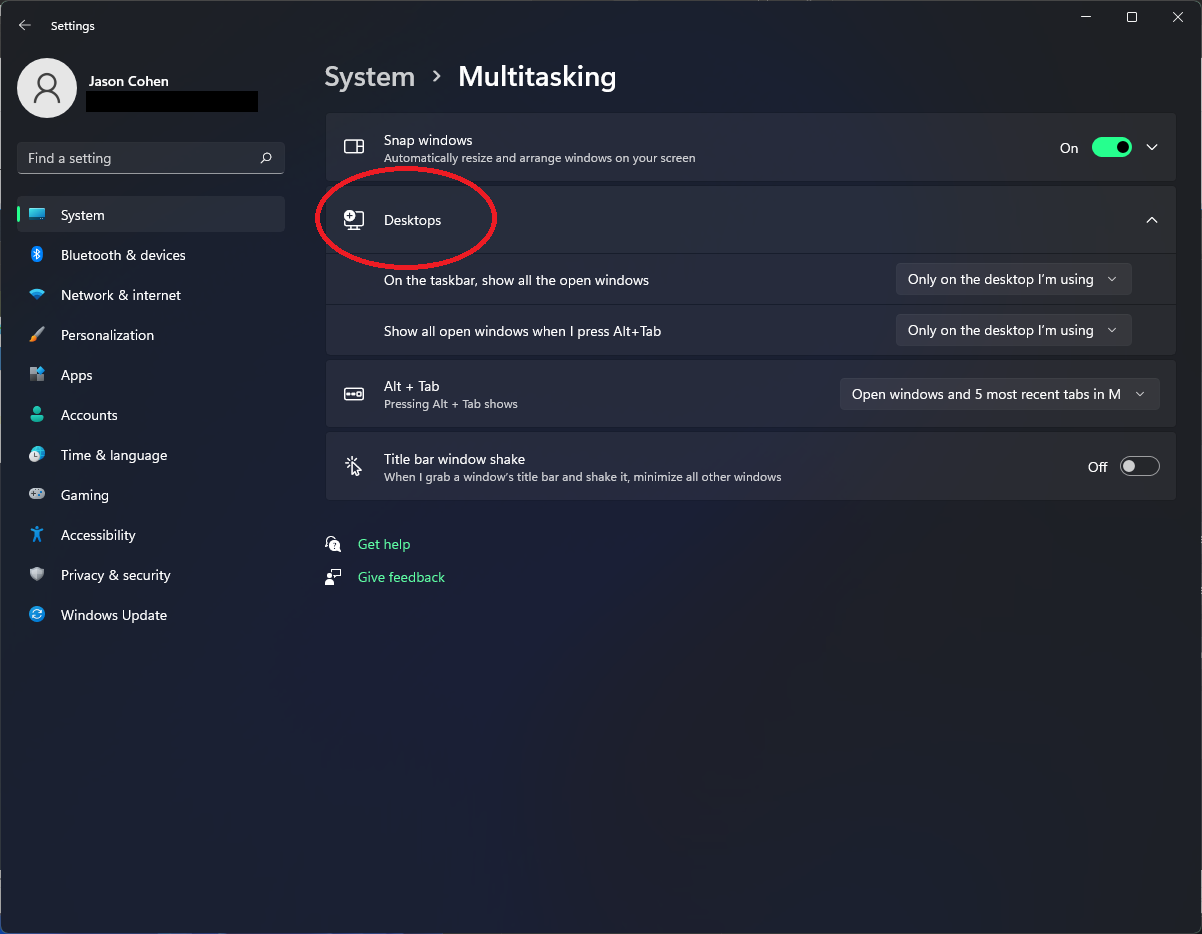
Add or Remove the Desktops Icon

Windows 11 adds the Desktops icon to the taskbar by default, but if you don't want it taking up space (or can't find it), right-click on the taskbar and open Taskbar settings. Then use the toggle next to Task View to remove the icon or add it back. Keyboard shortcuts will continue to work, whether or not the Desktops icon is visible.

